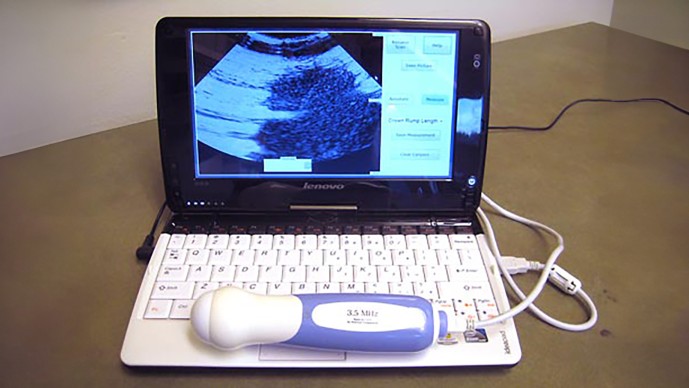Create New Technologies to Improve the Health of Mothers and Newborns (Round 6)

Roadblock:
In the wealthiest parts of the world over the last century, there have been remarkable improvements in the health outcomes of pregnancy. Much of that improvement can be traced to specific medical interventions such as the use of antibiotics for infection, blood transfusions for hemorrhage, corticosteroid administration prior to preterm delivery, mechanical ventilation for newborns, monitoring the fetus for risk of asphyxia before and during birth, safe anesthesia and cesarean section, and surfactant therapy. The ability to diagnose medical complications early, thereby preventing some of the most severe consequences of these conditions and to provide appropriate and rapid medical care once they occur has led to these improvements.
Unfortunately, these improvements are uncommon in the poorest countries where most of the world’s 340,000 maternal deaths, 3.2 million stillbirths and 3.6 million neonatal deaths occur. Specifically, sub-Saharan Africa and South Asia have the highest maternal and neonatal mortality rates, and the lowest use of hospitals for delivery or newborn care. Less than half the women deliver in hospitals, and uptake of many potentially life-saving interventions aimed at the mother or infant are equally low. In those locations, people often have few resources, little or no electricity, lack of clean water, poor transportation, and there are few trained health professionals or functional hospitals.
What We Are Looking For:
The goal of this topic is to solicit novel and innovative technological approaches to reducing maternal, fetal or neonatal mortality and morbidity in communities or primary clinics. For the mother, the critical conditions occurring during pregnancy and after labor include hemorrhage, hypertensive disorders (e.g., preeclampsia), serious infections, and obstructed labor, which account for 59% of maternal deaths in poor countries. For the newborn, the critical conditions occurring after birth are serious infections, complications of preterm birth, and birth asphyxia, which account for 76% of neonatal deaths. Important causes of stillbirth include many conditions, such as hemorrhage, fetal bacterial infection, obstructed labor, syphilis, and malaria. The new interventions addressing these critical conditions would need to:
- Have a strong likelihood of achieving a substantial impact on one or more important adverse maternal, fetal, or neonatal health conditions described above.
- Be designed to the requirements of minimally-trained health workers in homes and communities as well as of workers in primary clinics.
We seek proposals that may be "off the beaten track," daring in premise, and are clearly differentiated from approaches currently being developed or employed. Technologies or approaches should: enhance uptake, acceptability and provide for sustained use; enable or provide for low-cost solutions; promote effective delivery and administration of new solutions; and ensure or enhance safety. Proposals must (i) have a testable hypothesis, (ii) include an associated plan for how the idea would be tested or validated, and (iii) yield interpretable and unambiguous data in Phase I, in order to be considered for Phase II funding.
Outstanding proposals will specifically discuss:
- The intended user of the new technology (e.g. traditional birth attendant, community health worker, skilled birth attendant, physician);
- The setting(s) where the technology can be used (e.g. home, clinic, hospital);
- How the technology improves upon the best existing alternative(s) available today;
- The duration of time required to implement proposed technology;
- A clear plan for evaluating the successs of the technology in improving maternal and neonatal health.
Desirable attributes include:
- Approaches that can be used effectively to improve pregnancy and neonatal outcomes in community and primary clinic settings, where the large majority of births occur;
- Technologies that can be used in a setting with limited electricity, which need minimum maintenance, require minimal training and are relatively inexpensive to obtain and maintain;
- Products that favor early detection and prevention, as opposed to treatment of complications at a later stage;
- Technologies that enable self-care at home by women during pregnancy;
- Technologies embedded within a solid business plan to drive market penetration and uptake in poor countries;
- Technologies which consider reduction in not only the cost of the technology but how the technology can reduce the total cost of care.
A few of the many specific examples to be considered include:
- Methods to sustain or treat preterm newborns;
- Methods to prevent preterm birth;
- Methods to identify preeclampsia, including devices that measure blood pressure and proteinuria;
- Methods to prevent or manage birth asphyxia;
- Methods to prevent or manage neonatal hypothermia;
- Methods to detect obstructed labor;
- Methods to improve referral and transportation of mothers with complications and sick newborns ;
- Methods to improve availability to blood and fluid replacement for maternal hemorrhage;
- Methods to diagnose and treat both maternal and newborn bacterial or viral infection.
We will not consider funding for:
- Solutions that are not applicable to the developing world setting;
- Solutions pertaining exclusively to mental health;
- Solutions focused on treatment or diagnosis of malaria;
- Technologies that detract from favorable family practices such as immediate and exclusive breastfeeding or skin to skin care;
- Technologies or solutions mature in clinical testing and product development.
Grants will be selected on ability to create impact in the context of our existing global health priorities. For more information on The Bill & Melinda Gates Foundation's priority global health conditions, please click here.